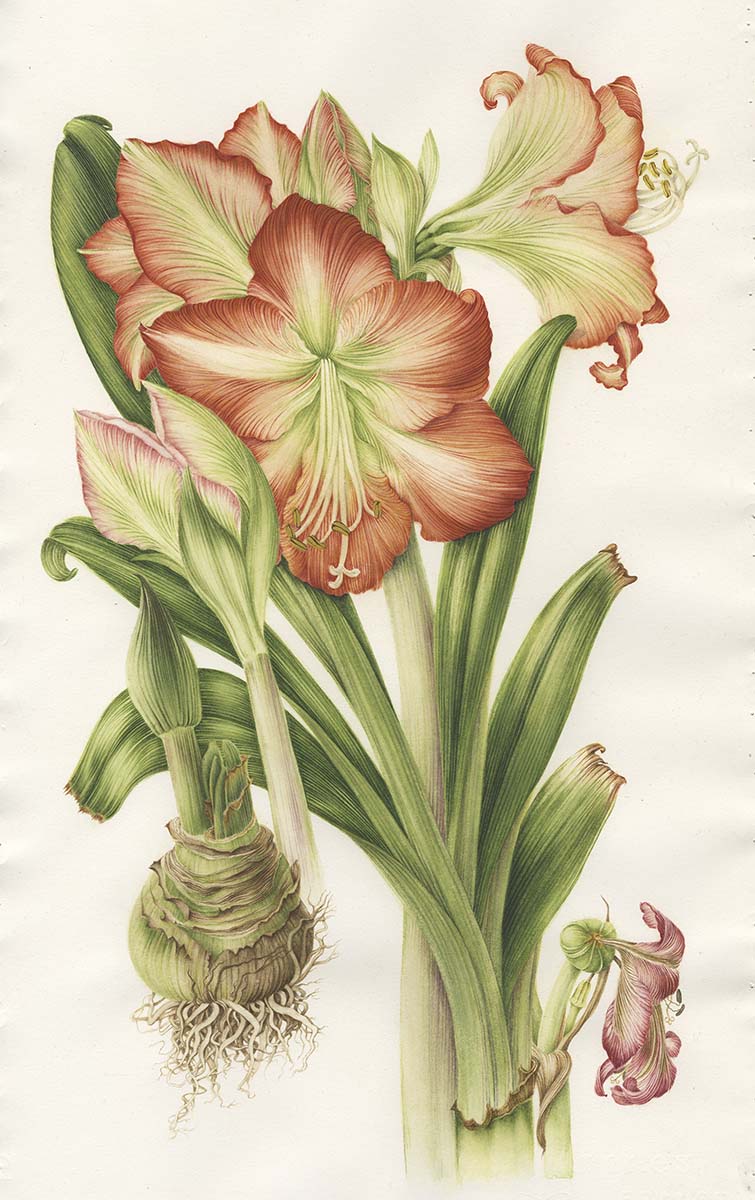
Amaryllis
10″ x 18″, 2018

Amaryllis
10″ x 18″, 2018
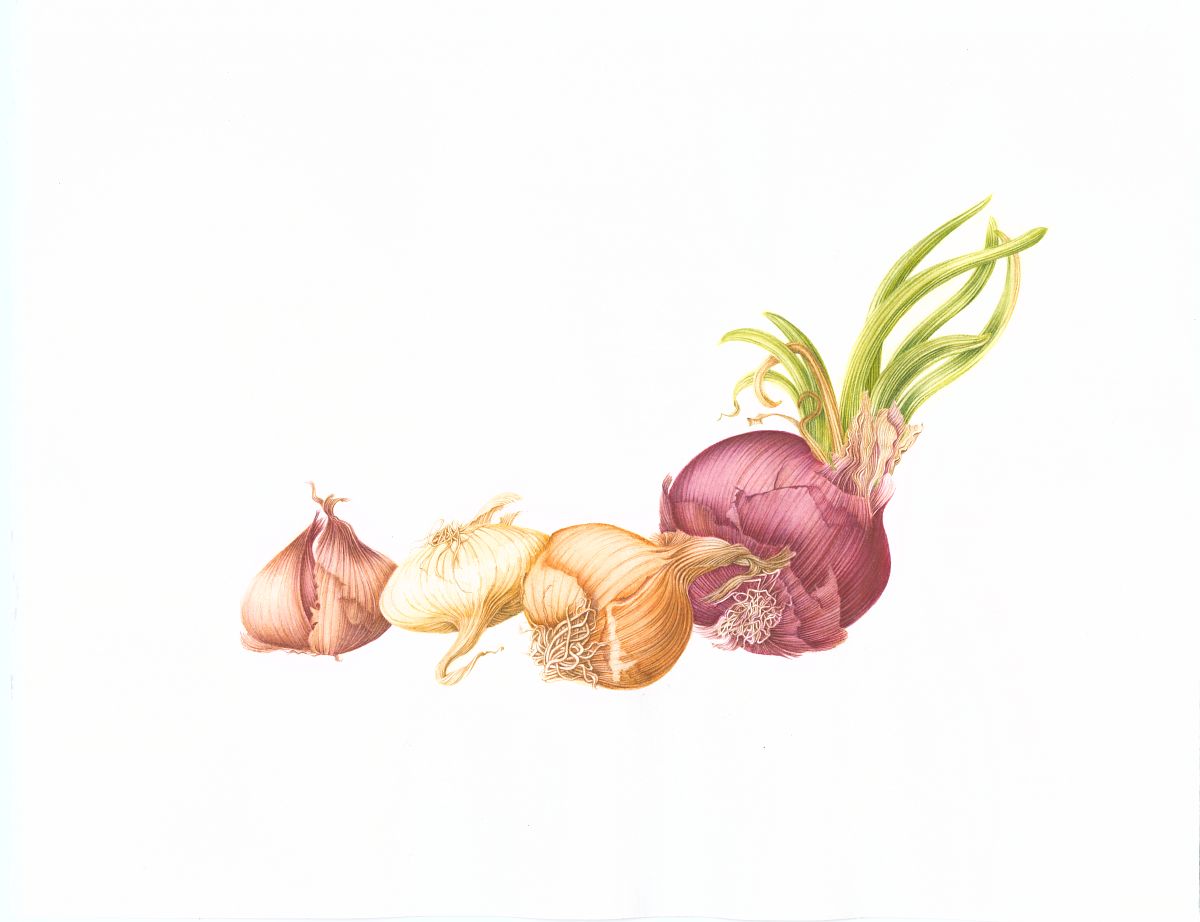
Onions
12″ x 7″, 2017
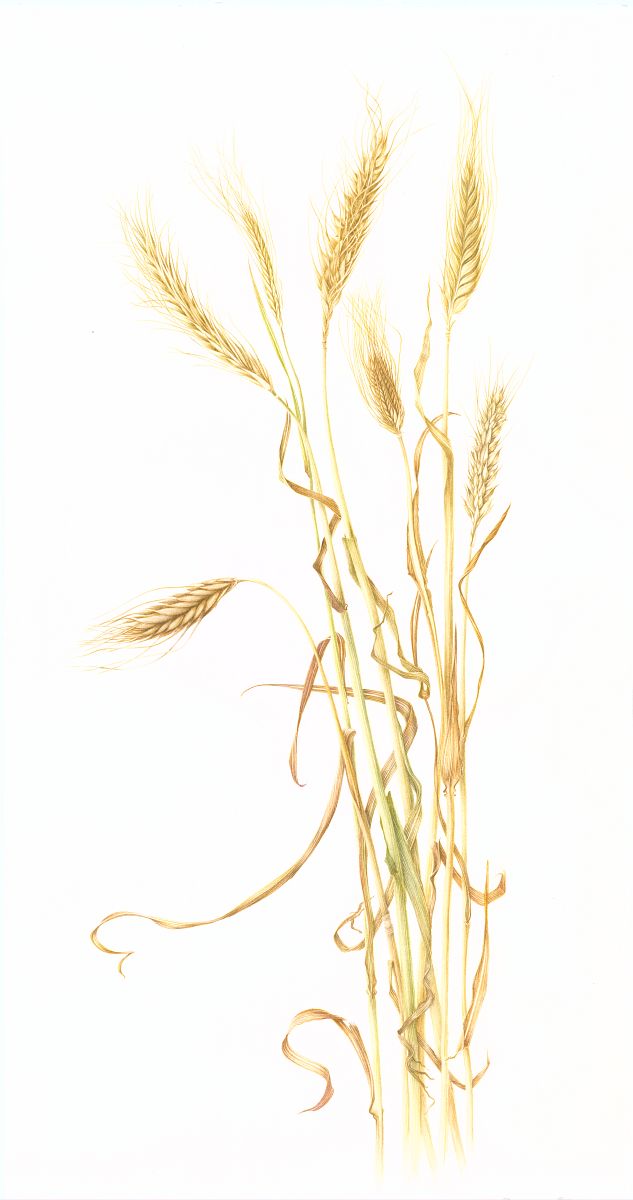
Wheat, barley, rye, oat
10″ x 21″, 2017
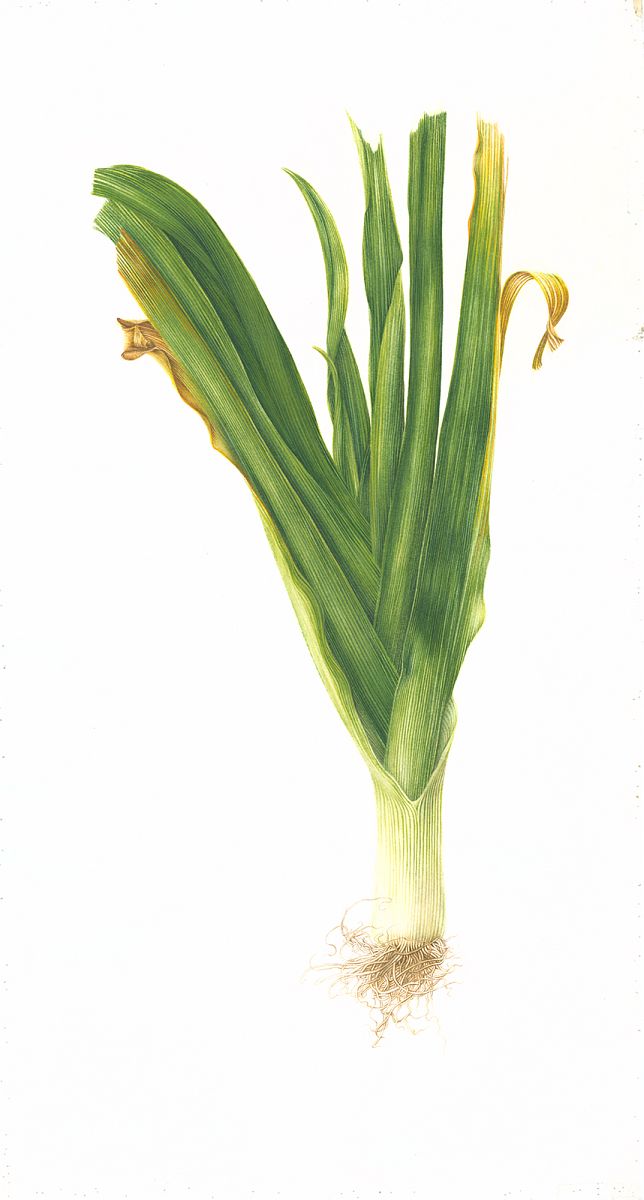
Leek
10″ x 20″, 2017
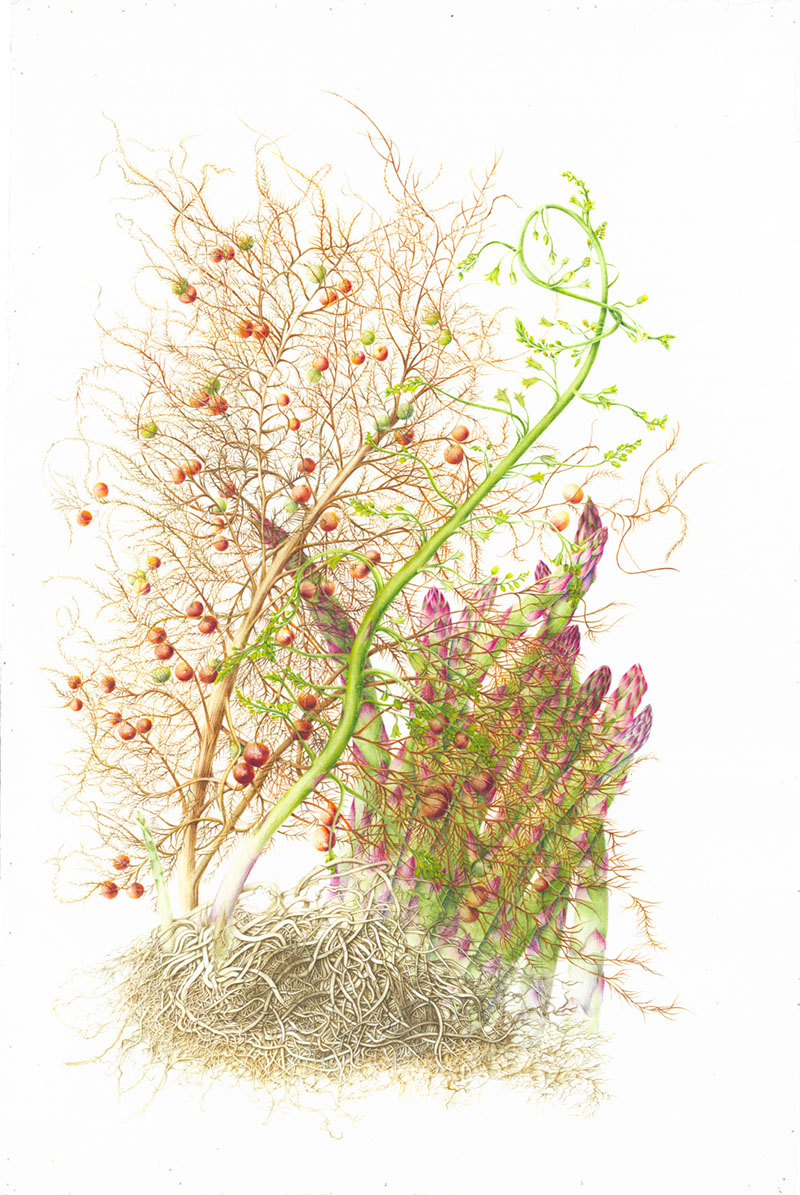
Asparagus
18″ x 13″, 2016
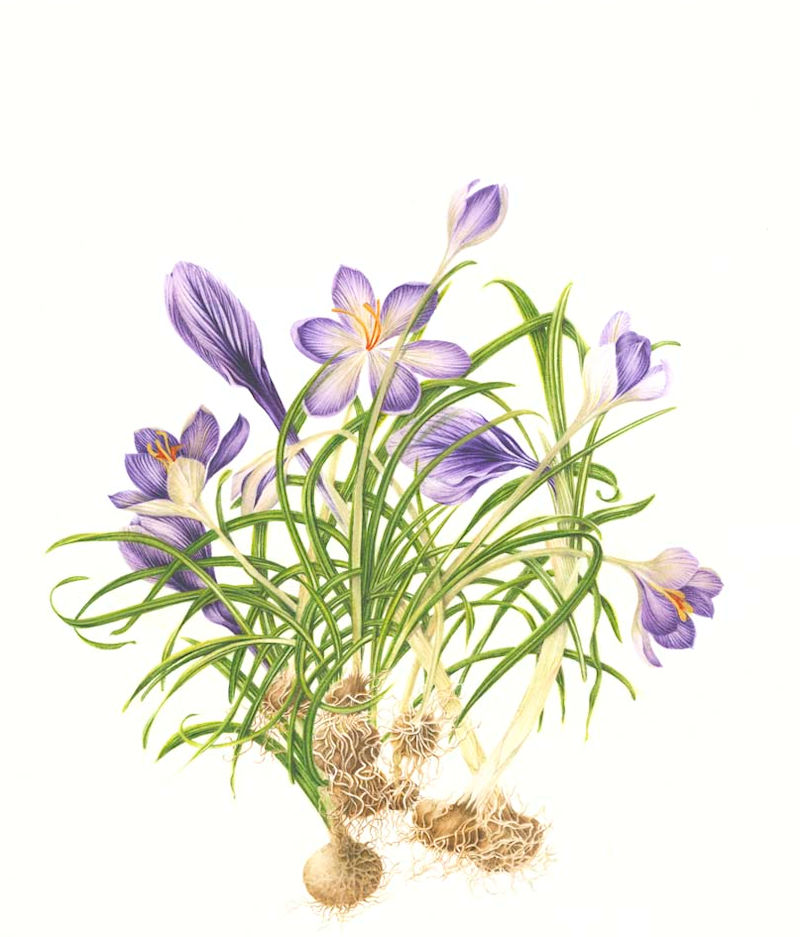
8″ x 10″, 2015
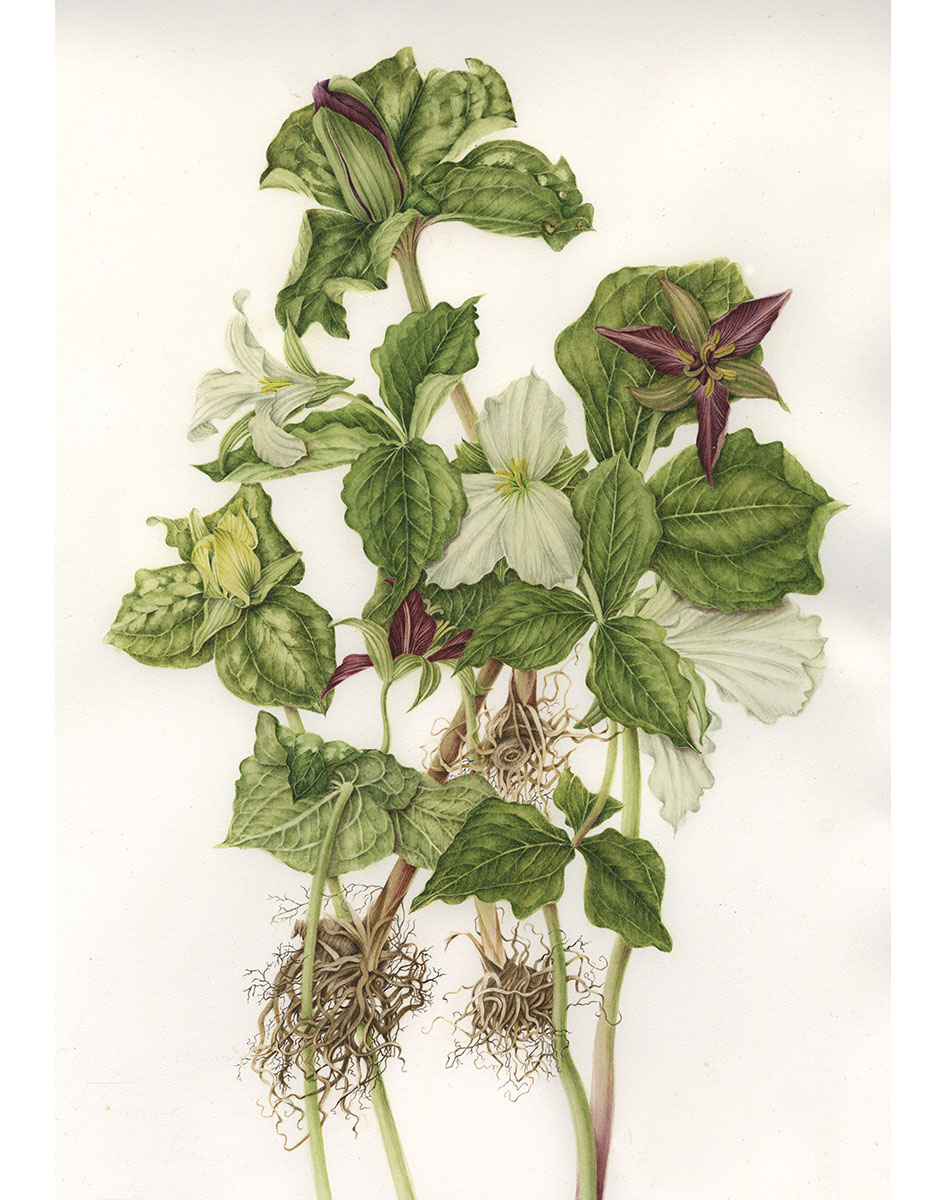
Trillium cuneatum, T. erectum, T. grandiflorum, T. luteum, T. ovatum
2014
In upstate NY if you walk by a shady meadow in early May you might find it carpeted with white or red speckles. If your curiosity is sufficiently aroused you might take a closer look and be rewarded with a wondrous discovery.
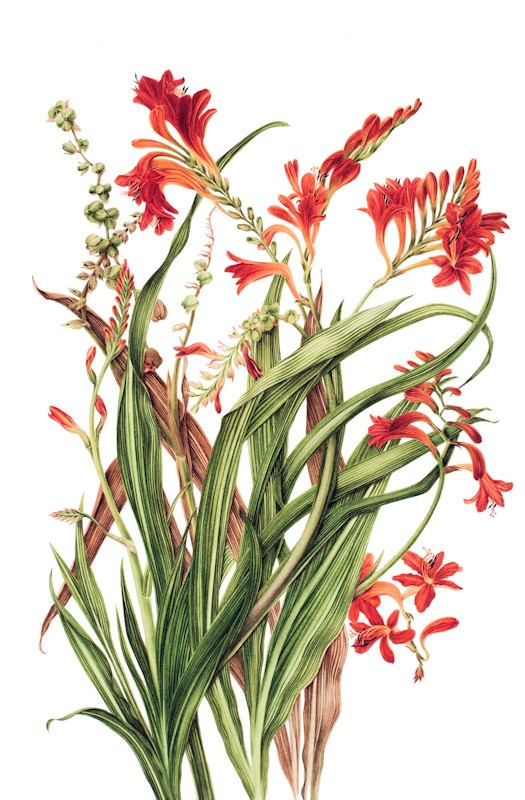
‘Lucifer’ (Falling stars, Coppertips)
11″ x 16″, 2014
Prints available
The August garden tends to look tired and frazzled, like Cinderella after the ball. But one exotic plant that dazzles and bewitches is Crocosmia.
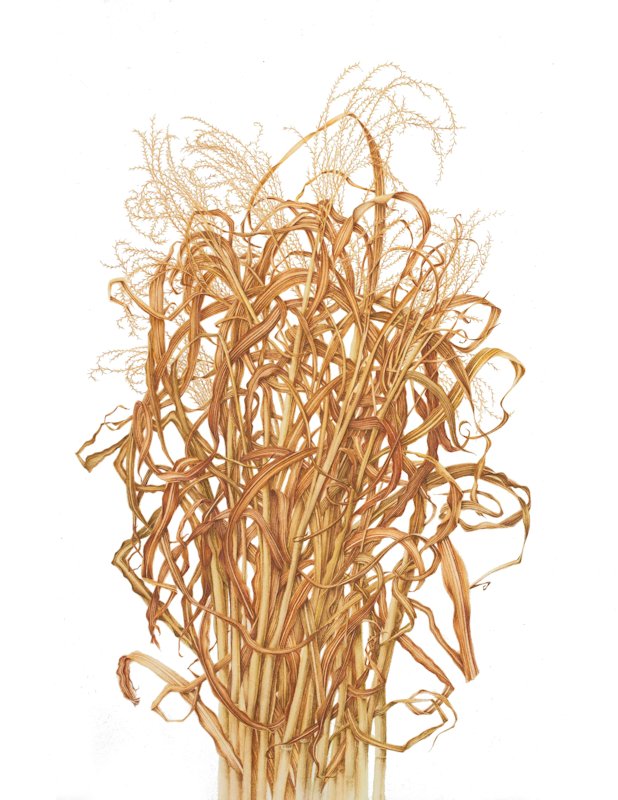
13″ x 21″, 2014
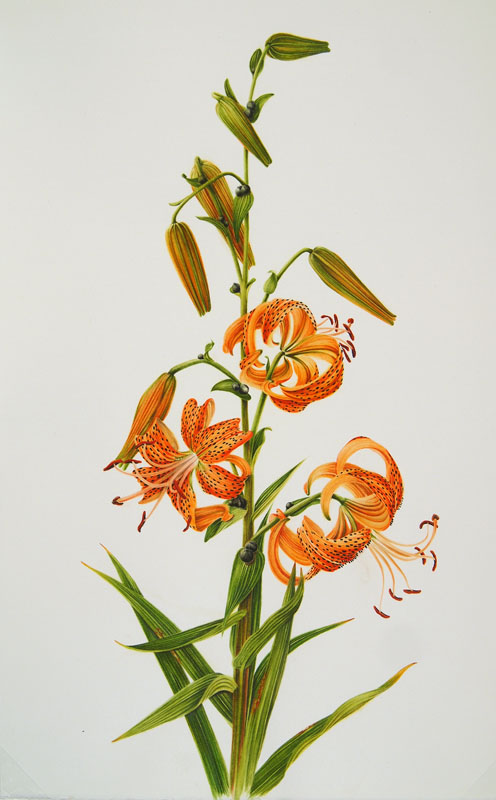
Tiger Lily
10″ x 19½”, 2011
Prints available
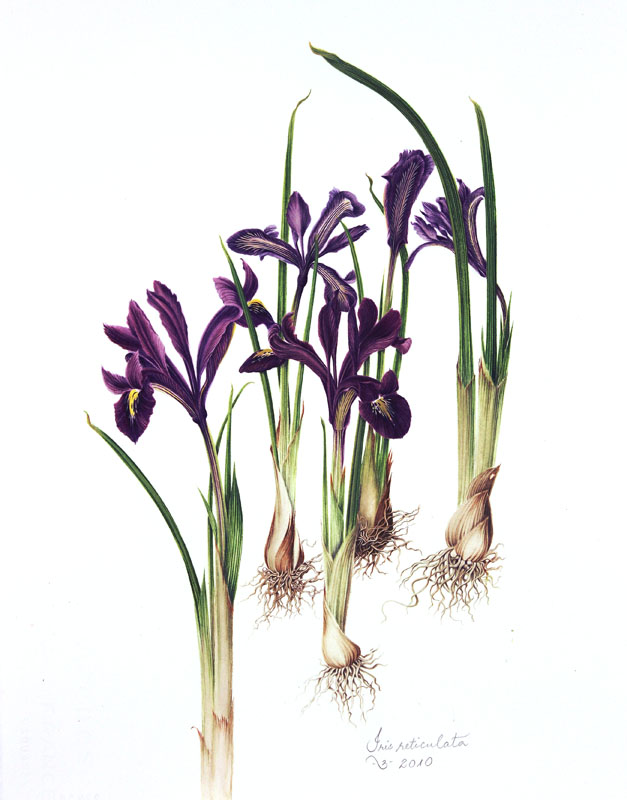
2010
The genus name derives from the Greek word for rainbow; and the species name comes from the Latin “rete”, meaning net and referring to the netted or reticulated pattern on the dry bulbs of the dwarf iris. In Greek mythology Iris, the messenger of the gods, is represented by the rainbow, which forms a bridge between the heavens and earth.
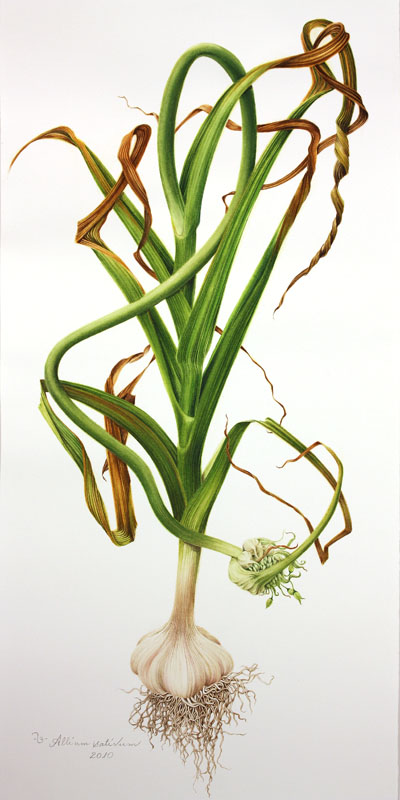
Garlic with scape & bulbil
2010
The genus Allium, from the Latin for garlic, includes several pungent bulbous plants—leeks, onions, chives. The garlic plant has a long folk history. Its use has been recorded in Vedic times, across cultures from ancient China to Egypt. It was believed to ward off diseases and infections and to confer strength. Garlic has had wide recognition for its fungicidal, germicidal, antiseptic and tonic uses wherever it is grown.
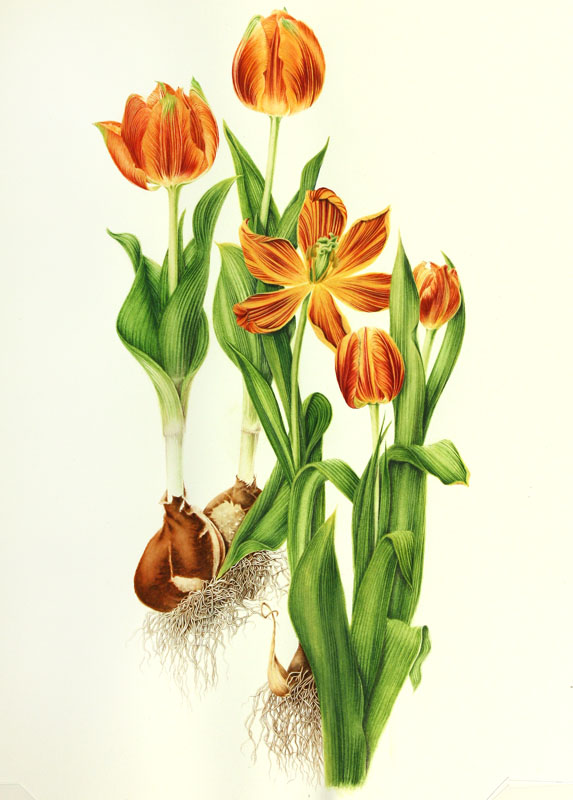
Prints available
Guess which wild flower native to Central Asia took western Europe by storm in the 17th century, built and collapsed fortunes, served as currency, led some to murder, others to suicide? None other than the tulip, of course!
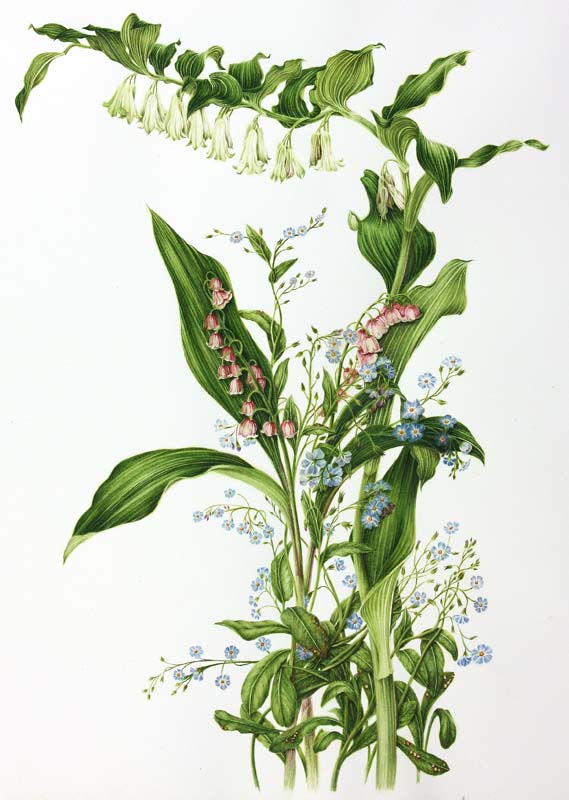
Convallaria majalis var. rosea (Pink Lily-of-the-Valley)
Myosotis scorpioides
Polygonatum commutatum
Prints available
From the Latin convallis for valley—a favored habitat for the plant—and majalis or belonging to May, this fragrant spring bloom derives its botanical name. Its other names are May Lily, Ladder-to-Heaven, Our Lady’s Tears but most popular of all is the lily-of-the-valley. Its flowers are usually white, although pale to darker pinks are less common but also popular.
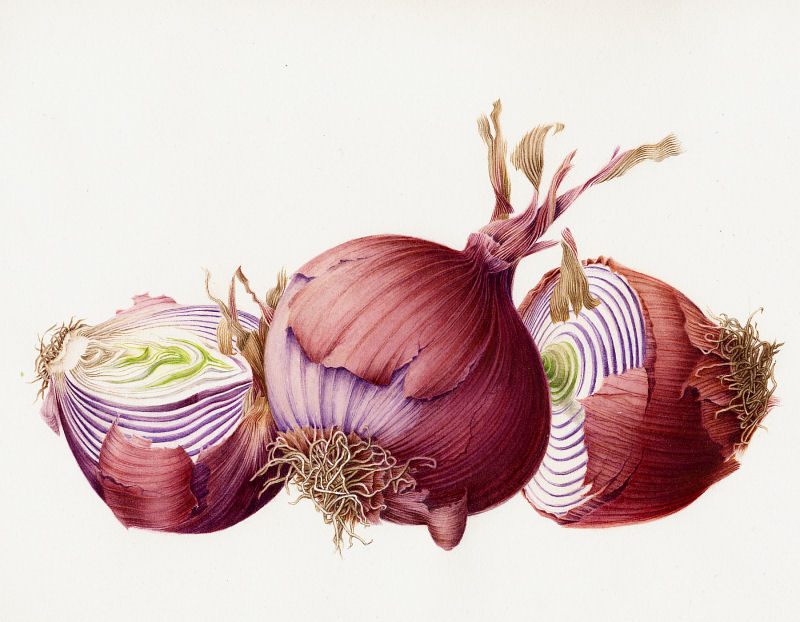
SOLD
Prints available
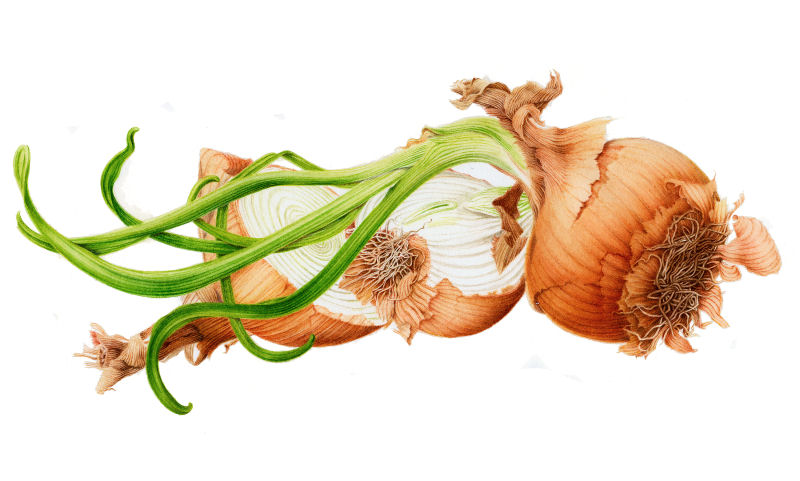
The genus Allium, from the Latin for garlic, includes several pungent bulbous plants, commonly called onion. Allium cepa is also known as the “garden onion” or “bulb” onion, related to wild species found in Central Asia.
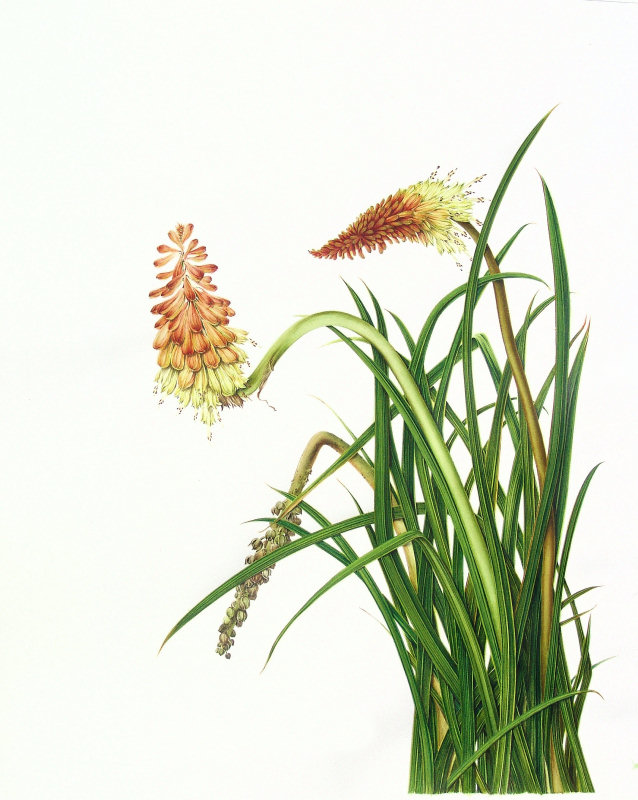
Red Hot Poker, Torch Lily, Tritoma
2008
Prints available
The plant’s original name Tritoma comes from the Greek for thrice-cut, a reference to their long leaves with very clearly defined three surfaces. Uva is Latin for bunch of grapes, describing the inflorescent arrangement of the blooms.
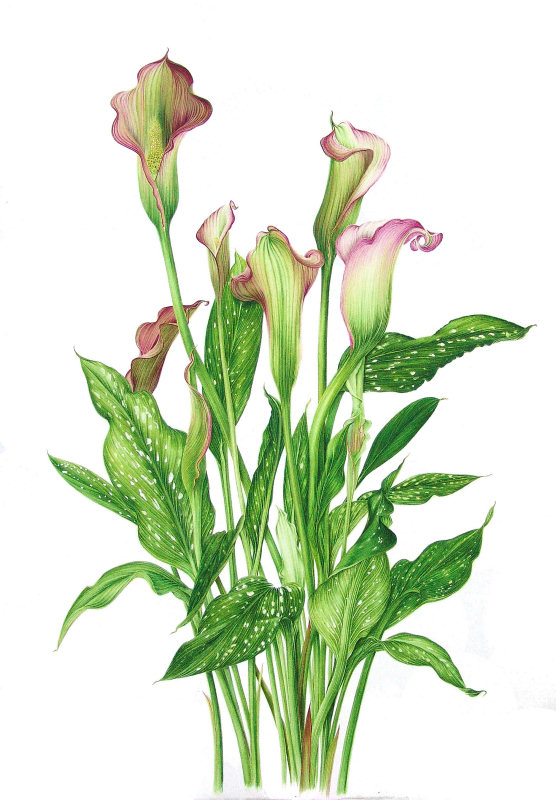
SOLD
2008
Oddly enough the Calla is not a member of the lily family. It belongs to the Araceae, and its common relatives are philodendron, aglaonema, caldium, anthurium, jack-in-the-pulpit.
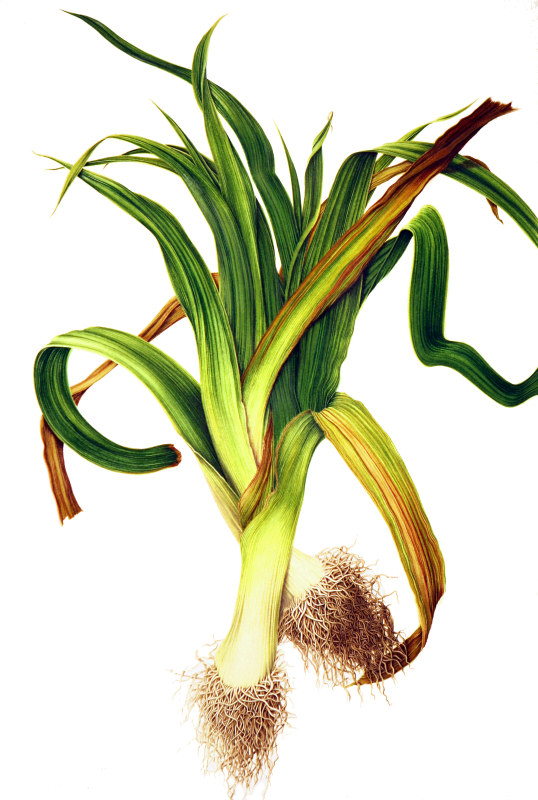
Prints available
The leek, Allium ampeloprasum var. porrum, also known as Allium porrum, is a vegetable which belongs to the same family as onions and garlic. In Greek ampel means a grape vine and pras means leek, resulting in epithet—the leek of the vineyard.
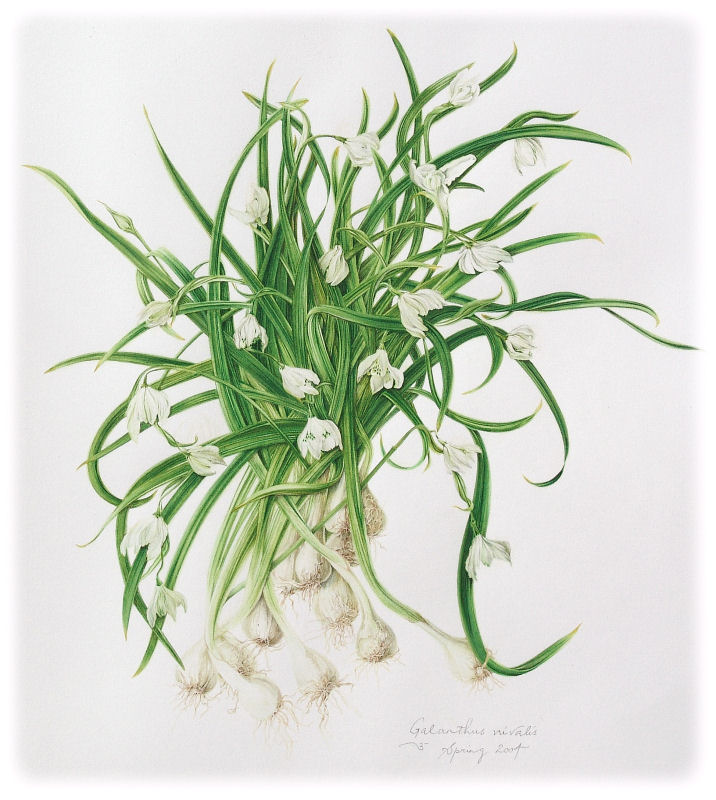
Snowdrop
2004
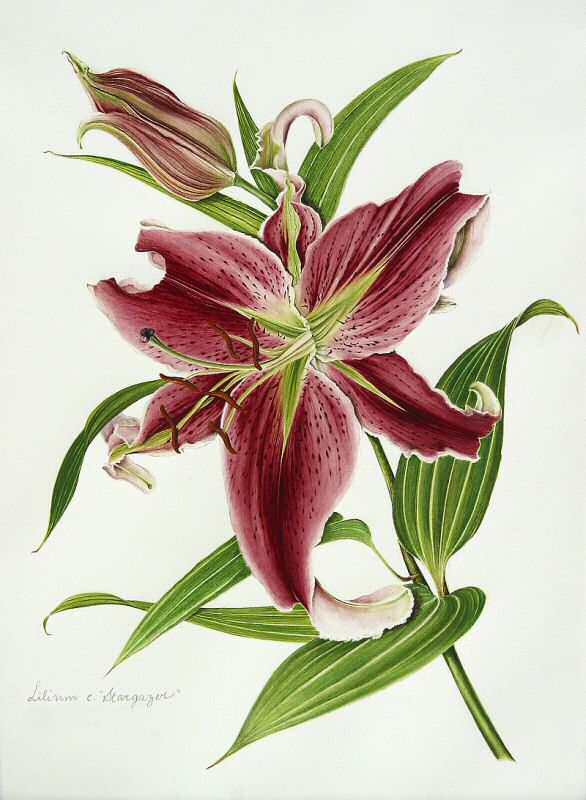
Stargazer
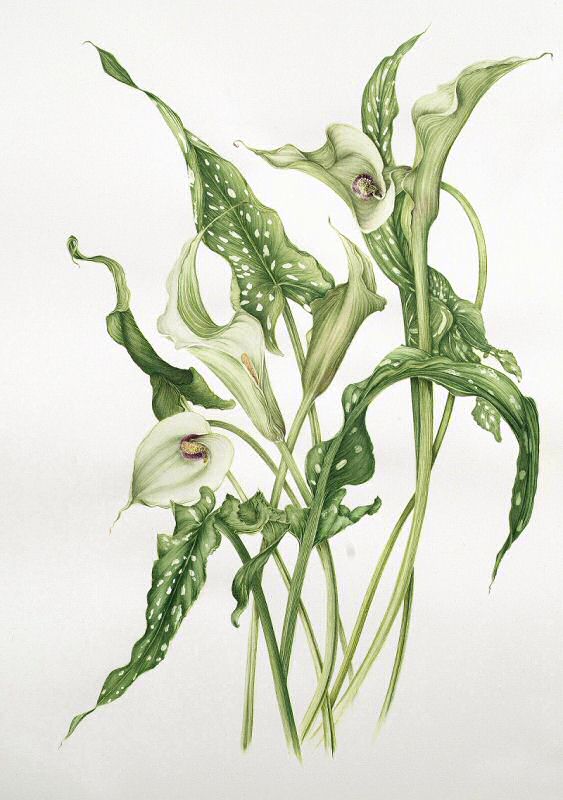
White calla lily
SOLD
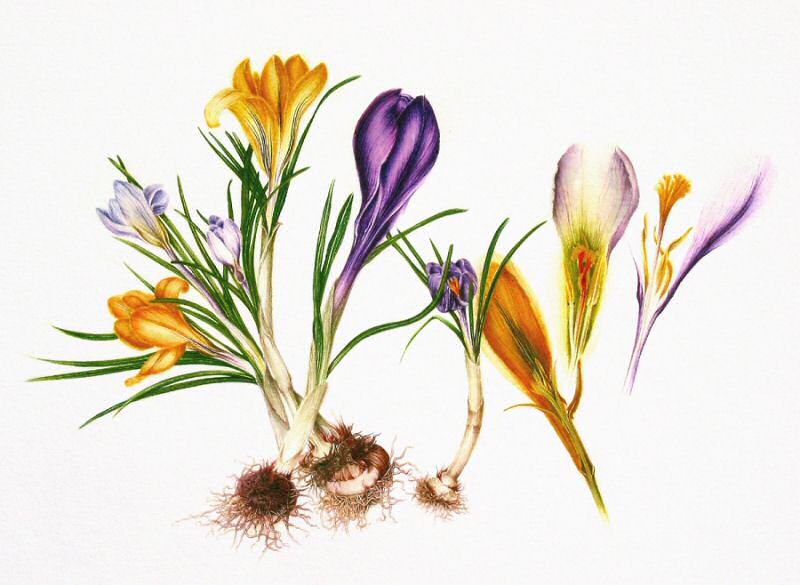
Yellow and purple crocus
SOLD
Prints available
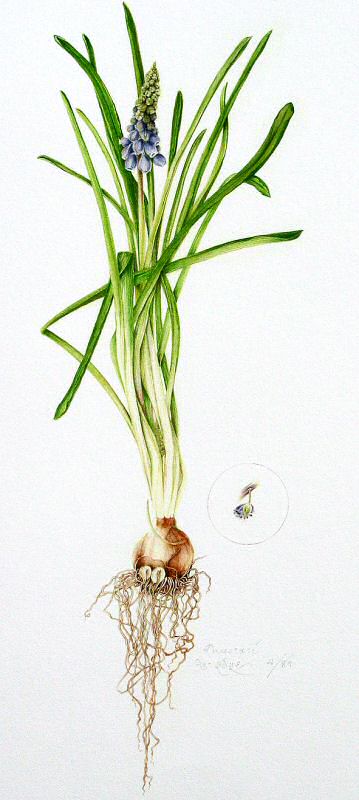
Grape hyacinth
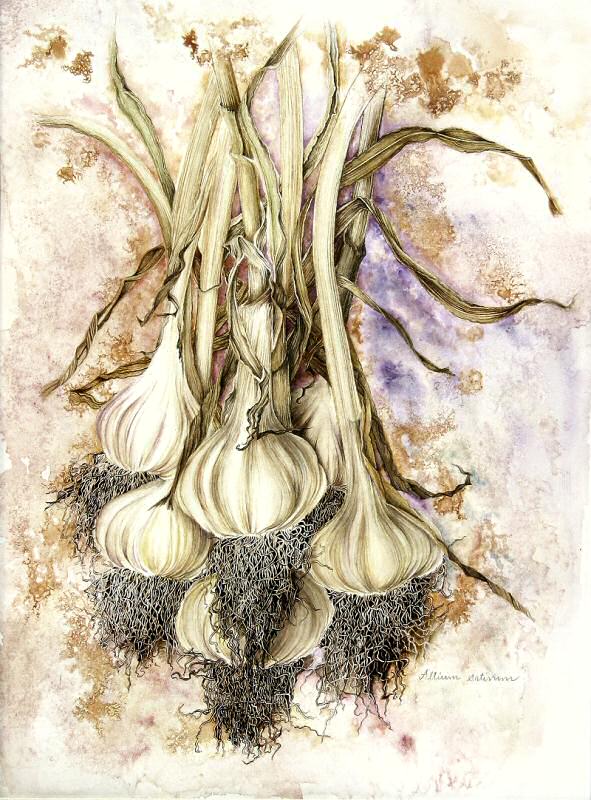
Garlic, a member of the Amaryllidaceae family, thrives in full sunlight and is a good neighbor to most plants, except legumes and alfalfa, and is thought to repel rabbits, deer, moles and insects. Its flowers are hemaphrodite, having both female and male organs. It is a perennial that is not frost tender and is cultivated worldwide.